From Farm to Table: Montenegrin Ingredients
39 min read Explore seasonal Montenegrin staples from mountains to coast—artisan cheeses, cured meats, wild fish, and olive oil—and how producers bring authentic flavors from farm to table. October 06, 2025 03:06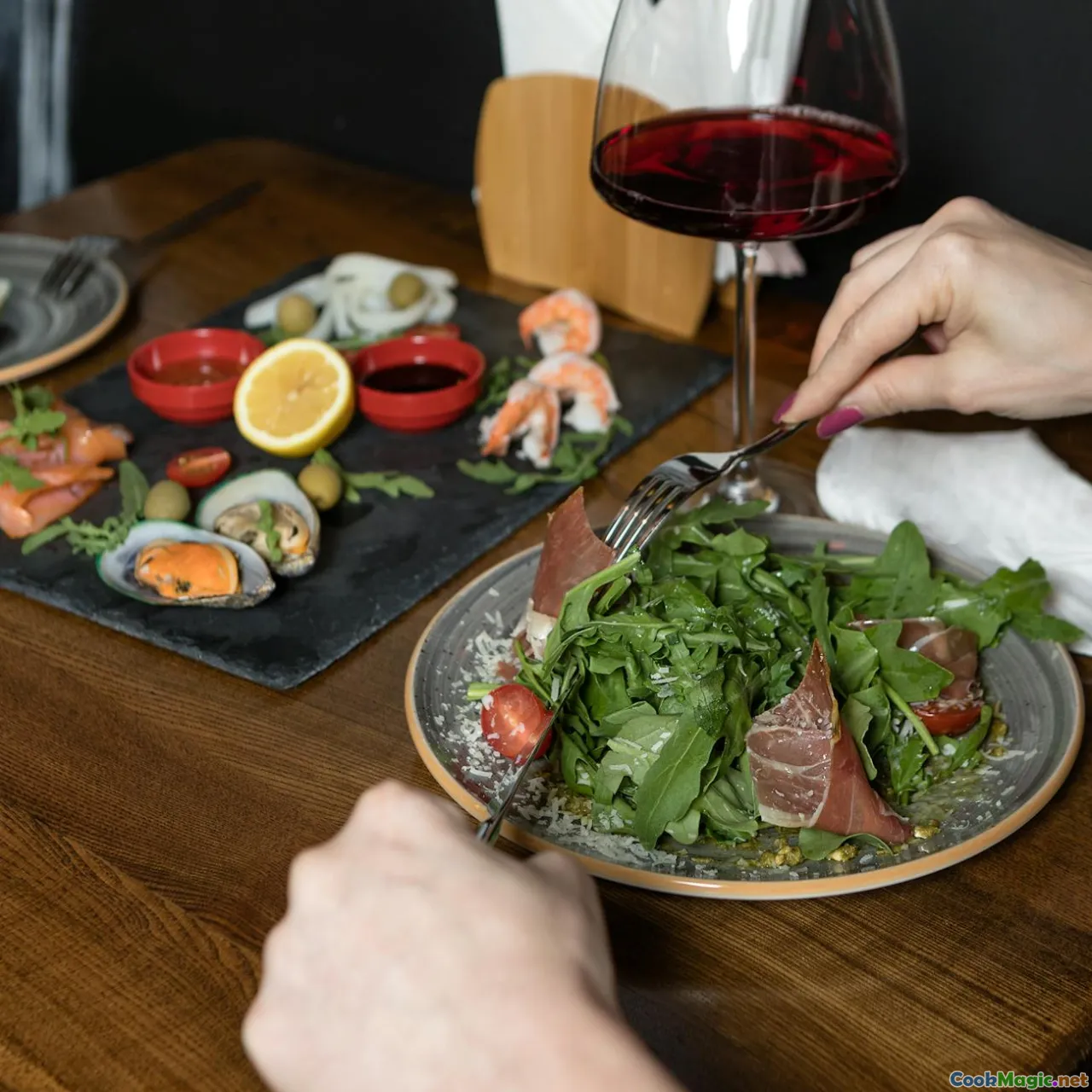
The first thing I smelled in Montenegro wasn’t the sea. It was wood smoke threaded with bay leaves, the breath of a kitchen waking up in a stone village above Kotor. Somewhere a copper kettle sang on a blackened stove. A woman with apricot-colored hands carried a wicker tray through the chill air, and on it lay triangles of fresh white cheese, warm priganice (those airy, golden dough pillows), and two bowls: one brimming with dark honey, the other with coarse salt that sparkled like frost. The Adriatic was blue and theatrical at my feet, but here, on the terrace framed by vines, the stage belonged to the ingredients—the kind that travel no farther than a winding road and a handful of hours from farm to table.
In Montenegro, you taste the land as much as the food. You taste limestone, mountain wind, olive wood, sheep pasture, brine, smoke, and sun. The ingredients have the stubborn honesty of the people who coax them into existence. They are not insistent; they are inevitable.
The spine of a small country, and how it seasons dinner

The map of Montenegro is a spine. To the west, the Adriatic; inland, jagged vertebrae of stone—Durmitor, Prokletije, Lovćen—rising like the weather’s own cathedral. That spine does more than impress hikers. It dictates the menu.
The karst landscape—a tangle of limestone, fissures, and caves—filters rainwater into sweet, cold springs that feed cheese-making villages. Wind tunnels shuttle between mountain saddles and the Bay of Kotor, carrying the bura, a dry northeasterly that salts lips and cures hams. Terraced groves cling to the sun-struck south near Bar and Ulcinj; wetlands of Lake Skadar teem with eel and carp. When someone in Njeguši offers you pršut, or in Kolašin a bowl of kačamak, this is not just a dish. It is the weather and geology plated.
As a cook, you can taste the difference. A tomato from the salt-shadowed coast behaves differently in a salad than one from a mountain garden. A lamb raised on thyme-matted pastures is already seasoned by the grass beneath its hooves. The country is tiny, the distances short, yet microclimates vary so dramatically that going from Virpazar to Žabljak feels like crossing cuisines.
Markets of dawn: where the day’s flavors negotiate

I keep a ritual when I cook in a new place: I go to the market at sunrise. In Kotor’s green market, the vendors arrive as the sky pales from slate to silvery peach. You hear the soft knock of crates, the hush-scratch of knives trimming dill, the rich thud of melons being tested like drums. The herbs are what catch you first—the pepper-fresh crackle of parsley, the brisk menthol of mountain mint, the resinous hush of rosemary. Then cheese calls out: straight-backed wheels of Pljevaljski sir oozing creaminess through cheesecloth; small, chalky-white rounds of goat cheese smelling of clean wool and rain. Every few steps, a jar of something amber and glowing—honey, quince slatko, tangerine marmalade—glimpses light and pulls you closer.
At Podgorica’s central market, I bought raštan—broad-collared greens, a cousin of collard, with matte leaves and a faintly mineral scent. The woman who sold it to me spoke of how raštan loves the cold, how it softens into sweetness after a frost. She advised me to cook it long with smoked ribs or a heel of pršut—the salt running down into the greens, the greens surrendering their bitterness to the meat. Her hands, stained green-black along the nails, moved decisively, tearing away the tough ribs from the leaves in a rhythm you could set a metronome to.
There is a joy to this choreography: the vendor who slips an extra lemon into your bag with a wink; the old man who insists you smell his wild sage, crushed between his thumb and a coin; the way cheeses are pressed under your nose untasted but already known. These markets are the social engine that makes farm-to-table here feel effortless. Because it is.
Olive and laurel: learning to taste the coast

Montenegro’s southern coast, near Bar and Ulcinj, is the kingdom of olives. The Old Olive of Bar—Stara maslina—has witnessed centuries of harvests; locals say she’s more than two millennia old. Her twisted trunk looks like driftwood and thunder carved it together. Around her, younger trees of the Žutica variety do the everyday work of filling bottles with oil the color of dusk.
I stood in an olive press in November, cradling a teacup of first-press oil that smelled not so much of grass as of something darker: artichoke hearts, green almonds, crushed laurel. A producer from Pečurice taught me to warm the cup with the heel of my hand, cover it, inhale—letting volatile compounds climb into my head—and then sip with a sharp breath, a slurp that feels impolite until you feel the flavor explode in your sinuses. The oil began sweet on the tongue, fat and almost floral, then turned peppery toward the back, a warm prickle stacking in my throat like kindling catching.
How to taste olive oil in Bar, and why it matters:
- Look for seasonal variation. Early harvest oils (late October) tend to be greener and more assertive; later oils (December) are softer. Pair intense oils with grilled octopus or bitter greens; tender ones with white fish or priganice.
- Note the laurel and citrus around groves. Laurel hedges and orange trees can influence how you perceive the oil; local cooks lean into the synergy by garnishing oil-drizzled dishes with fresh bay leaves, orange zest, or both.
- Ask for Žutica single-varietal if you can. It’s the everyday queen here: confident but not domineering, with a clean bitterness that arcs neatly into a pepper finish.
A coastal lunch I love goes like this: wedges of warm bread torn and dragged through pools of green oil sprinkled with flaky salt from Ulcinj’s solana; a row of anchovies laid on thin slices of lemon; ripe tomato, sliced at the table with a pocketknife and dusted with fresh oregano. The oregano, picked from a stone wall, smells like the word itself—oregano. It needs no translation.
Cheeses of the heights: a comparison in texture and temperament
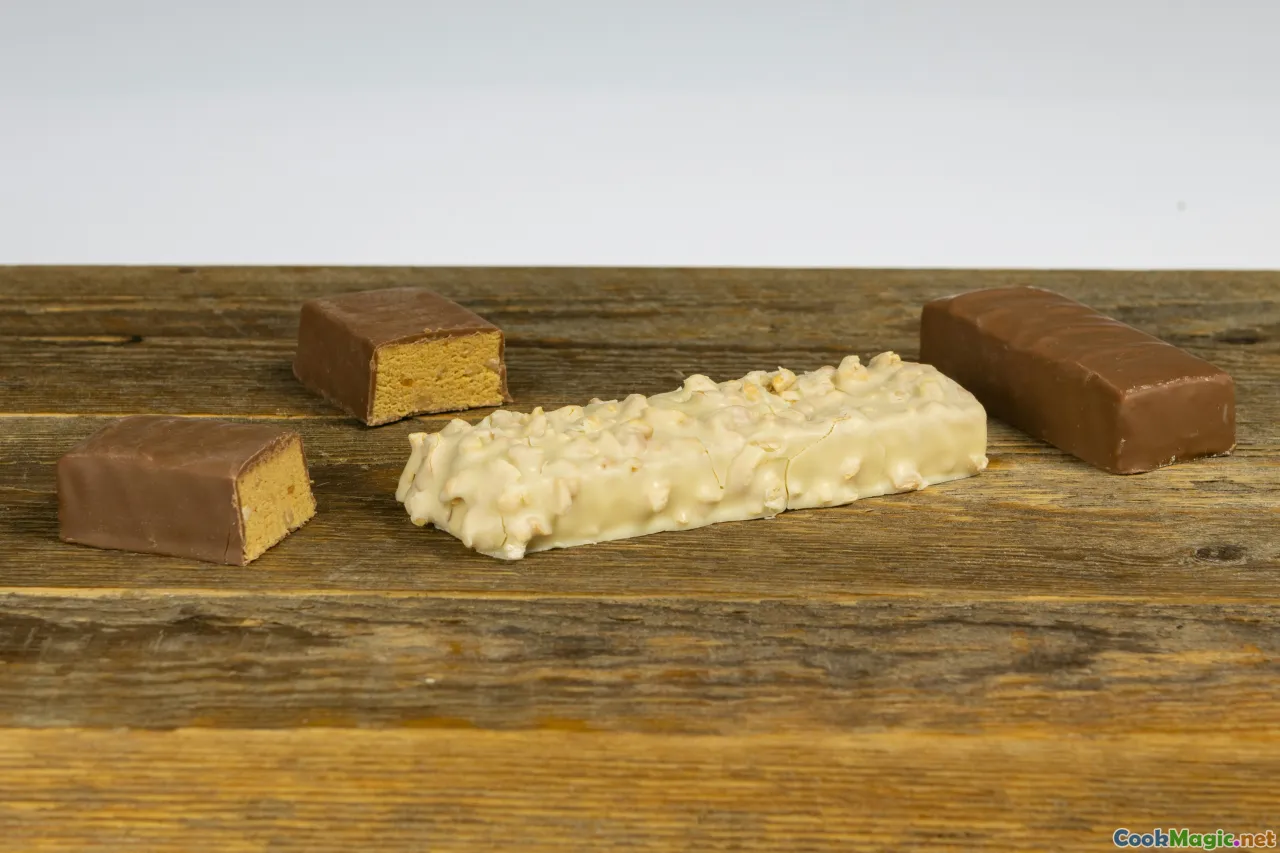
Montenegrin cheese is a lesson in landscape. If you taste widely, you’ll notice how a few hours’ drive shifts texture, salt, and tang like lenses clicking into focus. Here’s how I compare three that matter in my kitchen.
Njeguški sir: From the village of Njeguši, high on Lovćen, comes a semihard cheese often brushed with olive oil and sometimes kissed by smoke. It’s ivory, with small eyes and a dense crumb that flexes shyly under a knife. The smell hints at straw and hazelnut skins; the flavor is measured—a little salty, a little buttery—and it’s at its best sliced thin with pršut. For cooking, I grate it onto baked polenta or fold it into savory pies where I want assertiveness without aggression.
Pljevaljski sir: From the north, near Pljevlja, this cow’s milk cheese is salted and aged in wooden tubs or tins, often bathing in its own briny whey. It is a creature of generosity—soft, pliant, sometimes downright oozy when warm. It tastes like milk, not milk’s afterthought. I crumble it over grilled peppers, dab it onto hot flatbreads, nestle it beside honey. It loves herbs—especially dill and chives—and happily plays both breakfast and midnight snack.
Lisnati sir from Kolašin: “Layered” cheese, named for the delicate strata formed during production. Pull apart a slice and watch the layers separate like pages in a well-loved book. It has a higher acidity, a lemony lift that wakes up sleepy stew. Warm it and it softens but keeps its shape, making it perfect for baking whole with tomatoes and thyme.
Pairing notes and pantry habits:
- Njeguški sir plus dark honey and walnuts makes a snack that tastes like a mountain afternoon—resinous, sweet, and sturdy.
- Pljevlja cheese loves heat; slide thick slices into a cast-iron pan with a dot of butter until edges blister. Add a squeeze of lemon, serve over chopped raštan.
- Lisnati sir shines against acidity; tuck it into filo with spinach and scallions, brush with olive oil, bake until blistered.
Lamb and the wind: pršut, smoke, and a childhood flavor that isn’t mine
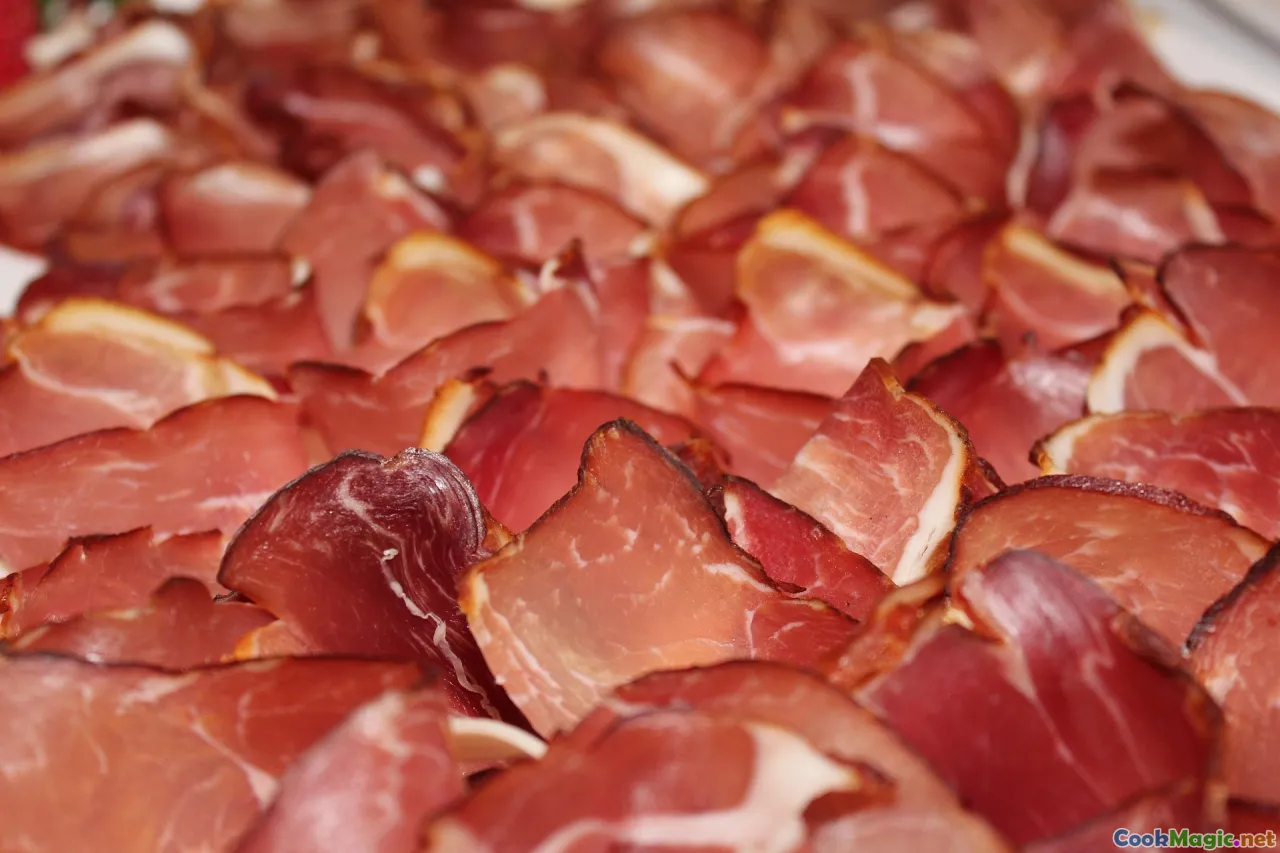
I grew up far from Lovćen, but the first bite of Njeguški pršut felt familiarly inevitable, like remembering someone you’ve never met. You lay a slice on your tongue and it slow-melts, the fat turning into silk, the meat releasing a slow tide of smoke. But this isn’t campfire smoke—it’s the sweet undertow of beech and oak and the invisible hand of bura. Folks in Njeguši tell you, matter-of-factly, that without the wind, pršut is simply ham.
The process is reverent and unsentimental: sea salt, mountain air, time. Legs are salted, rested, then hung in smokehouses whose dark wood has absorbed stories and aromas for decades. Smoke is less an ingredient than an environment. Walk into a smokehouse in winter and the air tastes like walnut shells and a hint of caramel, with a medicinal brightness that stings the eyes. The ham breathes that air for months.
When the pršut is sliced—always too thick for foreigners, always exactly right for locals—it lands on a wooden board beside wedges of firm cheese and perfumed olives. A dish of pickled peppers, sharp and grassy, cuts the fat. Bread is torn, not sliced. And the first glass of lozova rakija greets the ham like a handshake between old friends.
Beyond pršut, lamb is the mountain’s heartbeat. I tasted my favorite lamb in a village near Cetinje, cooked ispod sača—under the bell. The bell (sač) is a domed iron lid that sits over the lamb and potatoes; embers heap on top and around, turning the ground into an oven. The lamb steams in its own breath and the breath of rosemary sprigs tucked discreetly among the bones. When the bell is lifted, there’s a rush of hot air that smells like meadow and marrow. The potatoes are glossy with lamb fat, edges crisp where they touched the pan. The meat yields to a fork with a soundless sigh.
How to bring that home, without a sač:
- Use a heavy lidded pot or a Dutch oven. Line the bottom with sliced potatoes and onions, add lamb pieces rubbed with salt, pepper, garlic, and chopped rosemary. A splash of white wine or stock helps.
- Bake low (150–160°C / 300–325°F) for hours until tender, then raise heat briefly to crisp edges.
- Finish with a few torn bay leaves and a drizzle of Žutica olive oil. The bay releases a perfume that completes the illusion of shrubs rustling outside your kitchen window.
The bowl that hums: kačamak and its companions
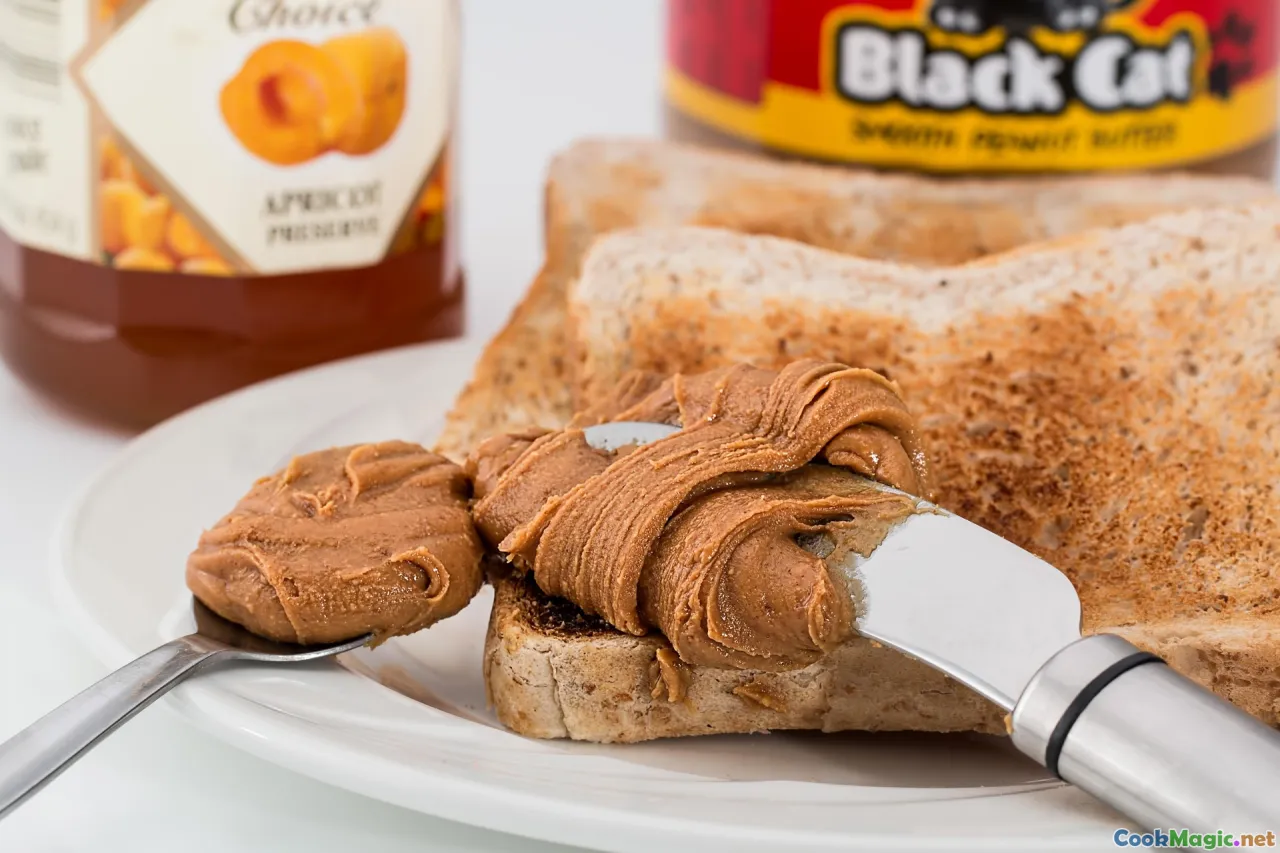
If pršut is a cut, kačamak is an embrace. It’s the mountain staple that feeds woodcutters, shepherds, and visiting writers with the same benevolent heft. The basic form: cornmeal cooked into a sturdy porridge vigorously beaten with potatoes and enriched with skorup (Montenegrin clotted cream) or kajmak until it stops being porridge and becomes something that hums under your spoon.
In Kolašin, I watched a grandmother stir a pot so large it took two hands and a hip to steady—cornmeal and potatoes swirling together like sleet. She added pieces of young cheese that vanished on contact, and a ladle of melting skorup that perfumed the room with sweet dairy. Then came the beating: wooden spoon against pot, a rhythm so confident you almost hear a tune. The kačamak turned glossy, almost elastic, strands forming as if there were mozzarella inside. When she spooned it onto plates, it ran slow, thick, like lava with a conscience.
How to make a home version:
- Boil peeled potatoes cut in chunks until very tender. In a separate pot, simmer fine cornmeal in salted water until thick.
- Mash the potatoes smooth and fold into the cornmeal. Add butter and crumbles of a mild cheese (Pljevaljski works).
- Beat with a wooden spoon until it gains sheen and resistance. Finish with spoonfuls of kajmak or skorup and a slick of melted butter.
- Serve with a side of tart fermented milk or thick yogurt, and a bowl of sautéed raštan with smoked meat.
The taste is maternal: warm, comforting, a little shy. The texture is the point—creamy but structured, so substantial it anchors anything around it. If you add a fried egg on top, the yolk will find valleys and settle in, yellow rivers through corn and potato.
Adriatic and Lake Skadar: fish that carry two stories
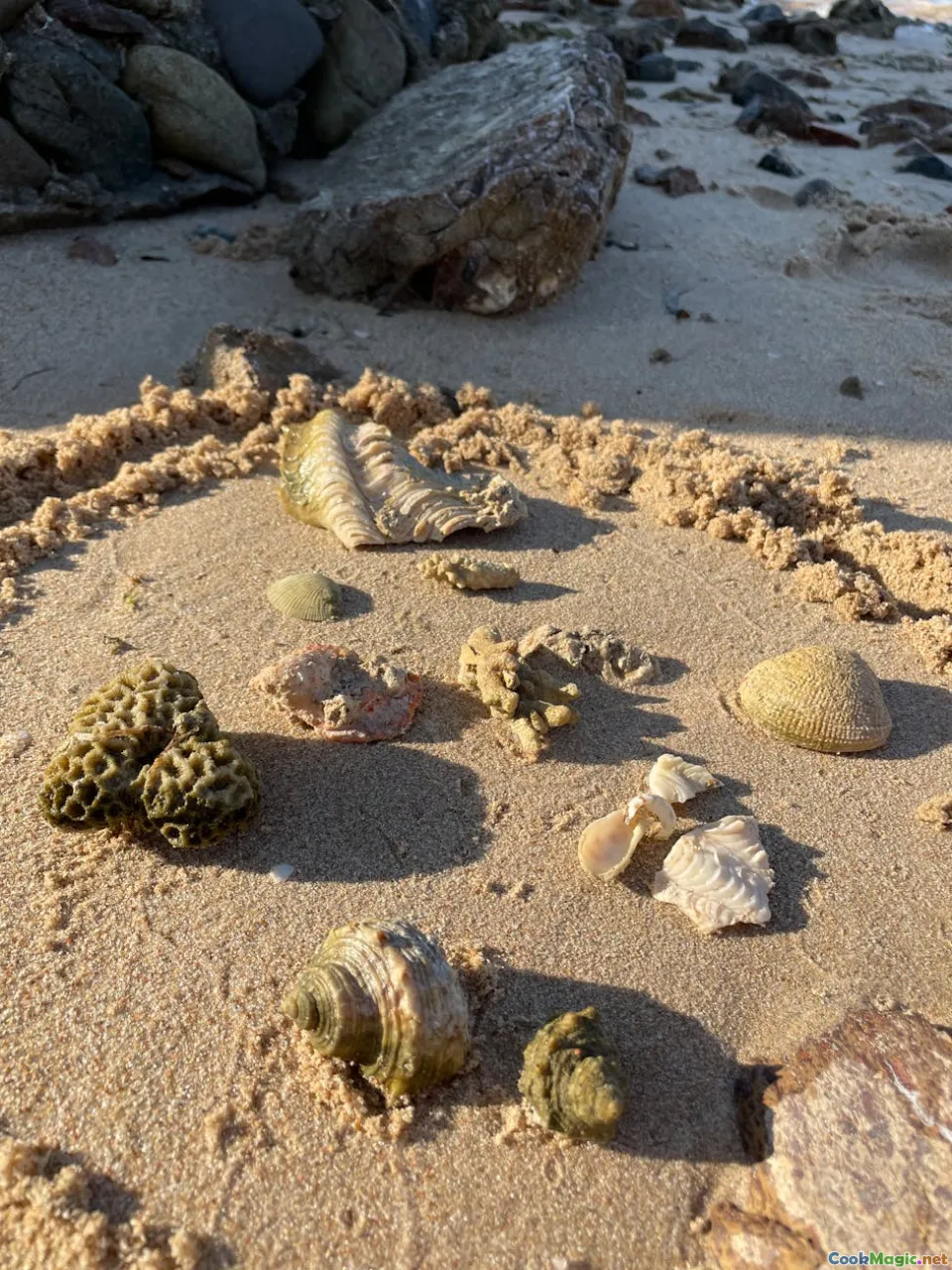
Montenegro’s waters are a study in contrasts. Along the coast, the Adriatic is a salt poem: clean, mineral, almost sweet in its salinity. In the south, just inland, Lake Skadar sprawls in shimmering shallows, home to eel, carp, bleak (ukljeva), and a universe of water birds.
On the coast, you’ll find black risotto (crni rižot) stained with cuttlefish ink until each grain of rice gleams like a raven’s feather. It tastes of the sea and low tide, a gentle iron richness blooming in your mouth. The best versions keep the rice al dente, the ink balanced with white wine and a fistful of parsley. Mussels from Boka Kotorska—raised on ropes in the fjord-like bay—steam open with garlic and laurel, the broth so good that locals treat bread like a tool for extraction.
In Morinj, at Ćatovića Mlini, the water runs right through the restaurant’s old mill, carrying a coolness that turns summer afternoon into something feasible. Their fish soup is a revelation in restraint—saffron’s whisper, celery’s suggestion, the fish itself speaking most clearly. I once had a grilled orada there, a sea bream with flesh that flaked in silky curls, the skin blistered into salty sweetness. A lemon from the garden provided light; a drizzle of oil from down the road provided grace.
Lake Skadar has its own dialect. In Virpazar’s konobe, you may meet carp baked with prunes—Orthodox Christmas tradition carried lightly into other seasons. It sounds unlikely until you realize how the richness of carp loves something sweet and dark; the prunes give a chew that turns every bite into a small event. Ukljeva, the local bleak, is often dried and then marinated with vinegar, garlic, and parsley, becoming a snack that makes a cold beer taste like it was designed for the purpose.
A home method I cherish: trout from a cold river near Rijeka Crnojevića, cleaned and patted dry, rubbed with salt, pepper, and crushed wild fennel seeds. Stuff the cavity with parsley stems and lemon slices. Pan-fry in olive oil and butter until the skin crisps audibly when tapped. Finish with a splash of rakija in the pan; it will flare, flame, and leave behind a shy sweetness.
The grammar of wild herbs
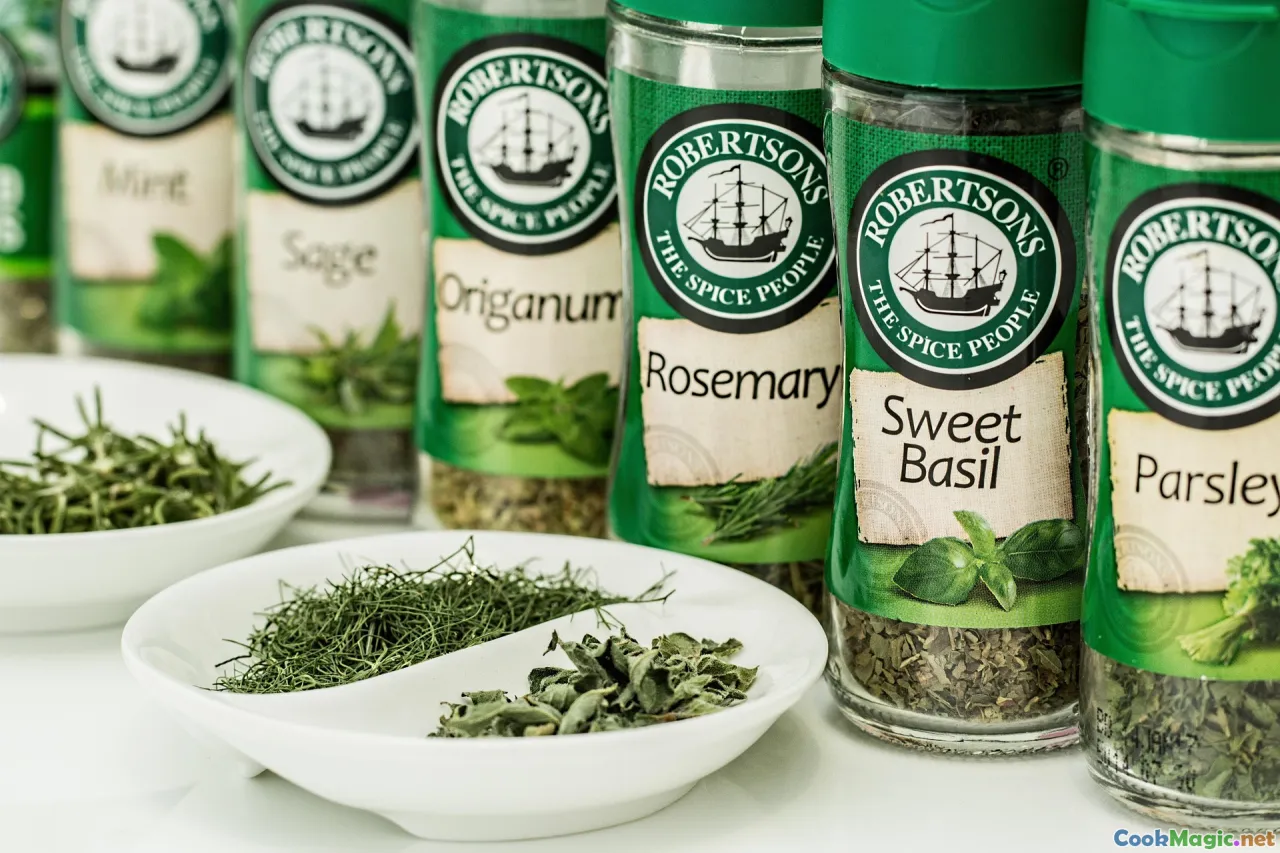
Montenegro is green in a way that’s not just color—it’s syntax. Dishes are built on the grammar of wild herbs:
- Sage (kadulja): Along the coast it grows in dusty clumps that smell of dry honey and attention. I tuck whole leaves under fish skin before grilling; the aroma is not loud, just right.
- Immortelle (smilje): You’ll see it in bunches on market tables, more often for scent than cooking, though it slips into herbal tea blends that taste like summer kept in a jar.
- Mountain tea (Sideritis): Golden stalks that smell crisp and luminous when poured over with hot water. Steeped strong, it’s a kitchen companion—soothing for digestion after hearty lamb.
- Savory (čubar): The cook’s confetti. I chop it into beans and grilled eggplant; its peppery edge straightens the back of a dish.
- Sea fennel (motar): Pickled on the coast, bright and iodine-rich. A spear on a slice of oily fish is the kind of pairing you immediately understand and then forever crave.
Travarica—herbal rakija—gathers many of these in bottle form. The best versions are made by someone’s uncle or neighbor. A sip brings warmth and nuance: thyme, mint, fennel, a string of bitter-orange peels. The drink isn’t so much sipped as conversed with; it punctuates a meal, clarifies a heavy sauce, ushers out a plate of cheese.
Vranac and Krstač: the grape’s compass
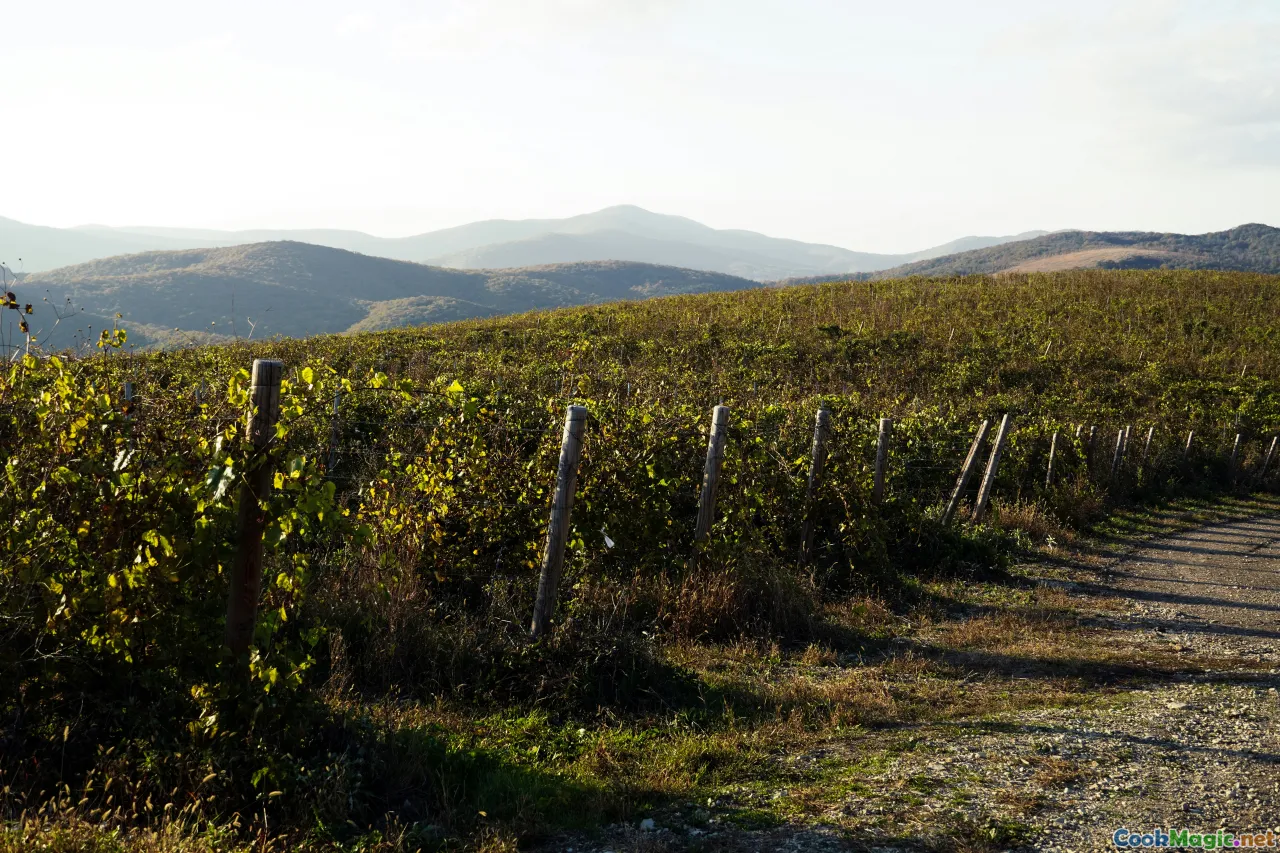
Wine tells you as much about a place as any stew. In Montenegro, two grapes serve as coordinates: Vranac, a red of generosity and swagger, and Krstač, a white with the lift of mountain air.
Drive through Crmnica, the cradle of Vranac, and vineyards stitch the slopes like lines of music. At Plantaže 13. Jul, the country’s largest winery, you can taste Vranac in several expressions—from youthful, purpled, and plum-lush to oaked, dark, and almost chocolaty. I prefer the middle ground: a bottling that lets Vranac’s natural acidity dance with black cherry and dried fig, the tannins firm but not stern.
Smaller producers in Godinje erupt with personality. A family poured me a Vranac that smelled of blackberries warmed on a stone wall, tobacco leaf, and a bay tree’s shade. With pršut and Njeguški sir, it made so much sense I wondered whether they had been invented together.
Krstač, rarer, often planted in pockets of limestone near Podgorica, tastes like pears and white flowers, with a lemon pith finish that reminds you it isn’t trying to be anyone else’s white wine. I pour it with grilled calamari or a plate of priganice drizzled in rosemary honey and call it a night.
Pairing compass:
- Vranac + raštan with smoked ribs: the wine’s acidity cuts the dish’s richness; the greens’ earthiness finds a mirror in the wine’s dried-herb notes.
- Krstač + crni rižot: the wine’s briskness skims the ink’s iron weight, resetting the palate without washing it out.
Winery names to seek: Plantaže for broad perspective; Radević Estate near Podgorica for craft and charm; Savina in Herceg Novi for a coastal whisper in the glass.
Honey and orchard: sweetness with edges
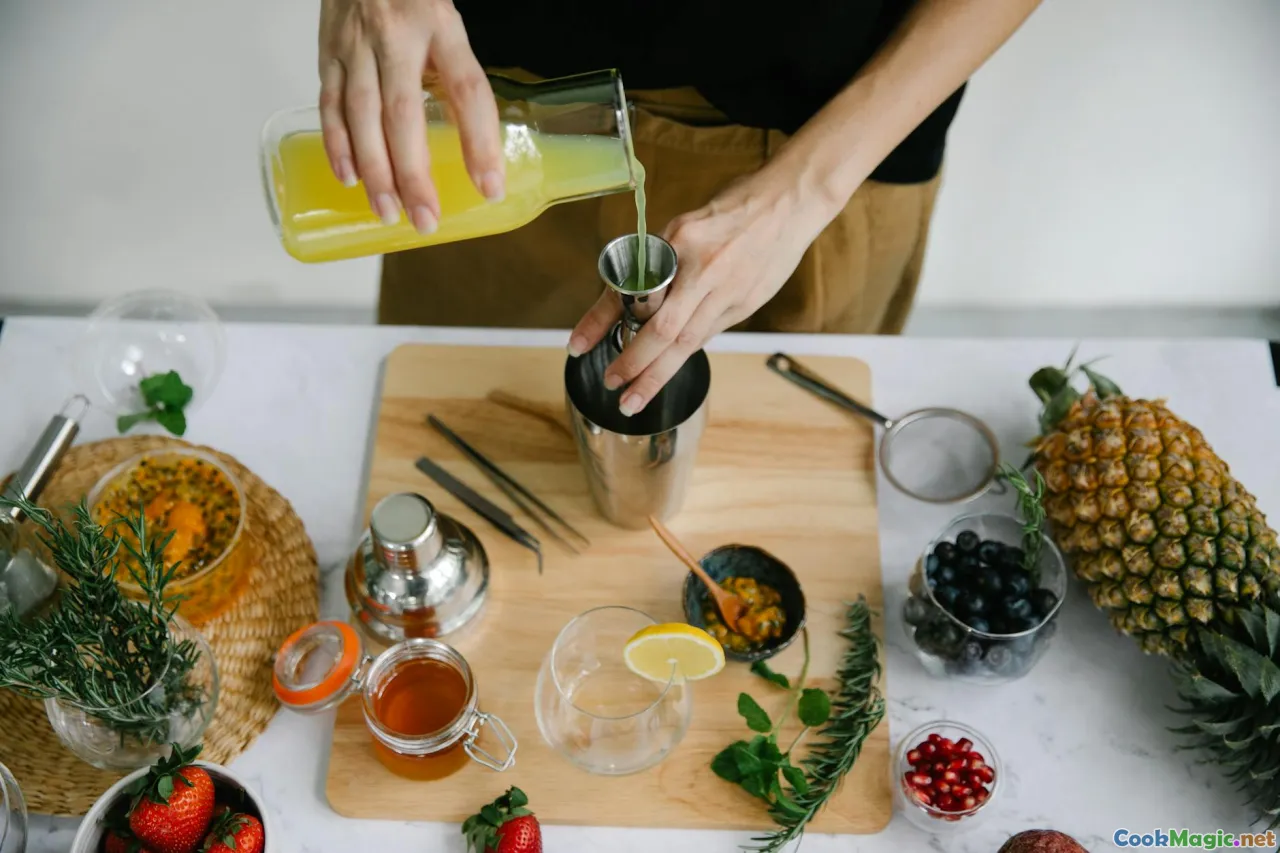
The first spoon of honey I took in Montenegro tasted like a season. It was chestnut honey from near Rožaje—dark amber with a bitter spine that turned sweetness into something thoughtful. Then came wildflower honey from the slopes of Durmitor, light and herbal, like spring sunlight in syrup. Orange blossom honey from Ulcinj smelled of zest and the ghost of white petals.
Beekeepers here talk about altitude and bloom cycles the way winemakers talk about slopes. Hives tucked near sage fields yield honey that smells faintly medicinal; hives near heather produce something softer, like a blanket around the tongue.
The orchards offer their own literacies. Pomegranates split at the seams and show jeweled arils, sweet-tart and clean. Quinces perfumed my rental kitchen for days, the scent like pears rewritten by a poet. I chopped them into a stew with lamb shoulder and onions, and the fruit’s grainy flesh turned silken, offering acidity and a sweetness utterly free of cloying. Tangerines from Ulcinj—thin-skinned, seed-dotted—peel with a spritz that makes your eyes water in a good way. A bowl of those on a table is a promise of snacks, dessert, and breakfast all at once.
Slatko—fruit preserves served by the spoon—speaks hospitality. Quince slatko on a white saucer shines like topaz. Cherry slatko tastes of summer soothed by sweetness. When a host offers it with a glass of water, you accept; you are being told you’re welcome, not merely fed.
A day among producers: a farm-to-table itinerary that actually tastes like it
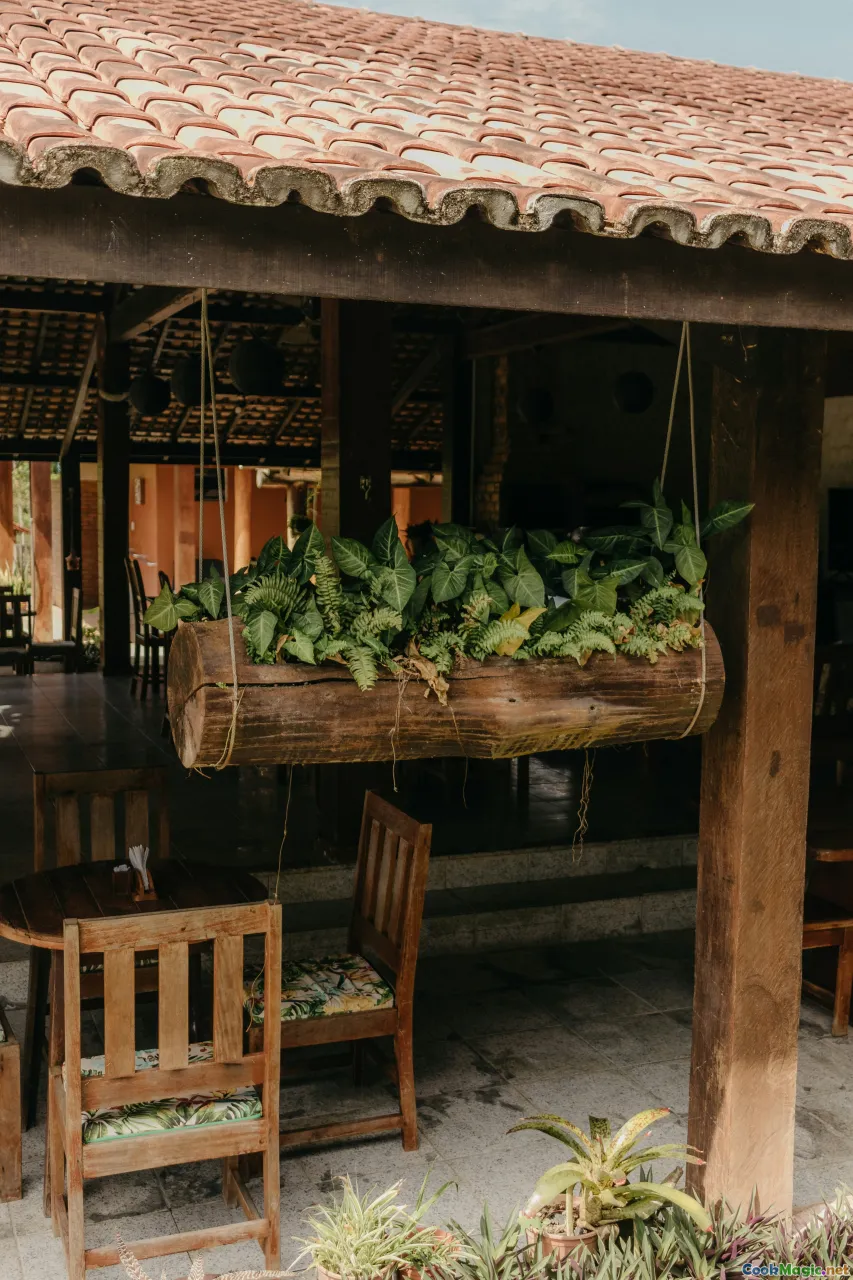
Morning in Kotor: coffee and a walk to the green market. Buy raštan, a wedge of cheese, olives, and a jar of honey.
Late morning: drive to Njeguši. Stop at a smokehouse—ask to see the room, breathe in the ham-scented air, buy slices wrapped in brown paper. Try not to open them before lunch. You will fail.
Lunch in Cetinje’s outskirts: find a konoba with a sač and order lamb. Ask for a side of stuffed peppers and a salad of tomatoes and cucumbers slicked with oil.
Afternoon: wind toward Virpazar. Park under plane trees and stroll. Visit a small winery for Vranac. Let someone’s grandmother hand you a plate of marinated ukljeva with onions. Learn, quickly, that you now love this fish.
Late afternoon: detour to Stari Bar. Taste oil at a local press, then walk to see the Old Olive. Place your palm on its bark. It will feel like a book.
Dinner on the Bay: Mussels, grilled fish, black risotto, a carafe of Krstač. Finish with mountain tea and a spoon of quince slatko. Walk along the water and listen to cutlery and laughter. This is farm to table, not because of slogans, but because distances are short and hands are many.
Cooking at home: three ingredient-led dishes, no baggage
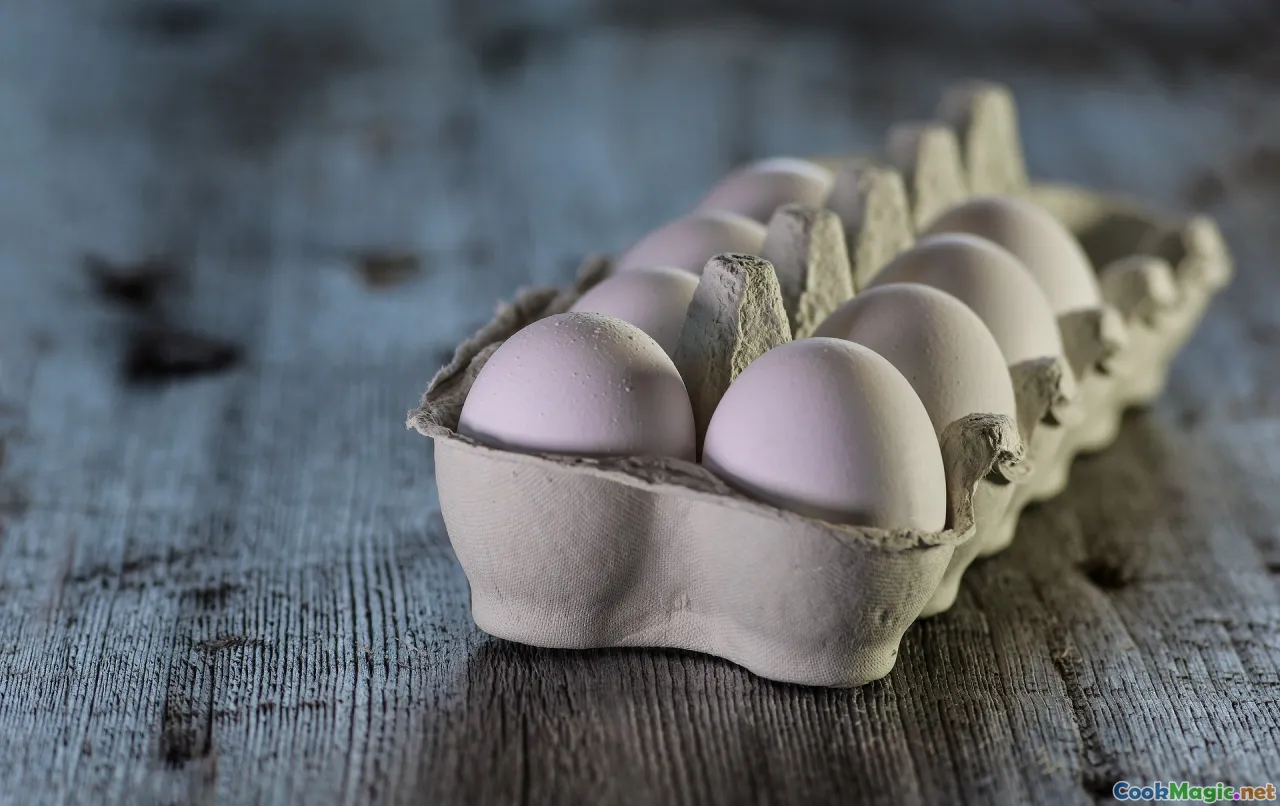
- Pan-fried Skadar trout with wild herbs
- Ingredients: two small trout, a lemon, a teaspoon of crushed fennel seeds, handful of parsley stems, salt, pepper, olive oil, a knob of butter, a splash of rakija (optional).
- Method: salt the fish inside and out. Rub fennel seeds into the skin. Stuff with parsley and lemon slices. Heat oil and butter until foaming; lay fish in, cook until the skin crisps. Flip; add a bit more butter. Splash with rakija; tilt the pan to flame if you like drama. Serve with wedges of lemon and a little chopped savory.
- Taste: crisp-skin, buttery, with a fennel breath that lifts the lake out of the fish and into the air.
- Kačamak with sautéed raštan
- Ingredients: cornmeal, potatoes, butter, Pljevaljski sir or similar, kajmak/skorup. For raštan: a bunch of raštan, smoked pancetta or ribs, garlic, olive oil, a splash of water.
- Method: Cook the kačamak as earlier described. For raštan, strip leaves, blanch, then sauté with chopped smoked meat and garlic in oil. Add a splash of water and cover to steam until tender.
- Taste: the kačamak is a blanket; the raštan is the story told under it—smoky, earthy, with a bitterness softened into something eloquent.
- Njeguši pršut, figs, and young cheese on grilled bread
- Ingredients: slices of pršut, fresh figs (or fig jam when out of season), young goat cheese, crusty bread, olive oil, bay leaves.
- Method: Grill bread brushed with olive oil until striped and fragrant. Rub with a cut clove of garlic if you like. Top with cheese, pršut, and halved figs. Tuck in a bay leaf for scent; remove before eating if you want, though I leave it in for perfume.
- Taste: smoke, salt, jammy sweetness, and the green apparition of bay.
Tips for ingredient sourcing and substitutions beyond Montenegro:
- Raštan can be swapped with collards or cavolo nero; the texture is key.
- If you can’t find kajmak, mix equal parts mascarpone and crème fraîche with a pinch of salt. It isn’t the same, but it behaves.
- Seek out olive oils that label harvest date; use them where you can taste them. Save refined oils for high-heat frying.
Seasonality and stewardship: more than a menu, a promise

Farm-to-table in Montenegro is not a trend—it’s survival and pride. Many producers work small plots. Shepherds move flocks between summer and winter pastures, the old practice of transhumance that keeps grasses healthy and the cheeses honest. Families dry meats not to be artisanal, but because the wind and climate ask them to.
Tourism has brought pressure and money, sometimes in tricky proportions. It’s easier now to find a laminated menu than a grandmother stirring a pot with her shoulder for leverage. Yet go a few kilometers inland, or stroll an hour earlier, and the old ways feel less like ways and more like simply life.
How to support this as a visitor and cook:
- Buy directly. Markets are the obvious start, but farm gates sell cheese, honey, herbs. Ask, and you’ll be led.
- Honor seasonality. Don’t demand tomatoes in February; try pickled peppers or slatko.
- Eat what’s around you. On the lake, carp; in the mountains, lamb; on the coast, cuttlefish and sardines.
- Pay for time. If a dish takes hours, it took years to learn; tip like you learned something.
The land returns generosity with generosity. If you respect it, the land puts extras on your plate—an extra lemon, a story, a recipe whispered in the doorway.
A glossary of flavor, quickly

- Raštan: Montenegrin collard; loves long cooking with smoked meats.
- Njeguški pršut: air- and smoke-cured ham from Njeguši; bura wind is essential.
- Pljevaljski sir: soft, brined cow’s milk cheese from Pljevlja; melty, milk-forward.
- Lisnati sir: layered cheese from Kolašin; lemony and structured.
- Skorup: clotted cream similar to kajmak; dairy velvet.
- Žutica: local olive variety near Bar; yields green, peppery oil.
- Vranac: flagship red grape; black cherry, plum, herb; loves meat and smoked dishes.
- Krstač: native white grape; pear, white flowers, lemon pith; likes fish.
- Motar: sea fennel; pickled, briny, crunchy.
- Ukljeva: bleak fish from Skadar; often dried and marinated.
The table at dusk
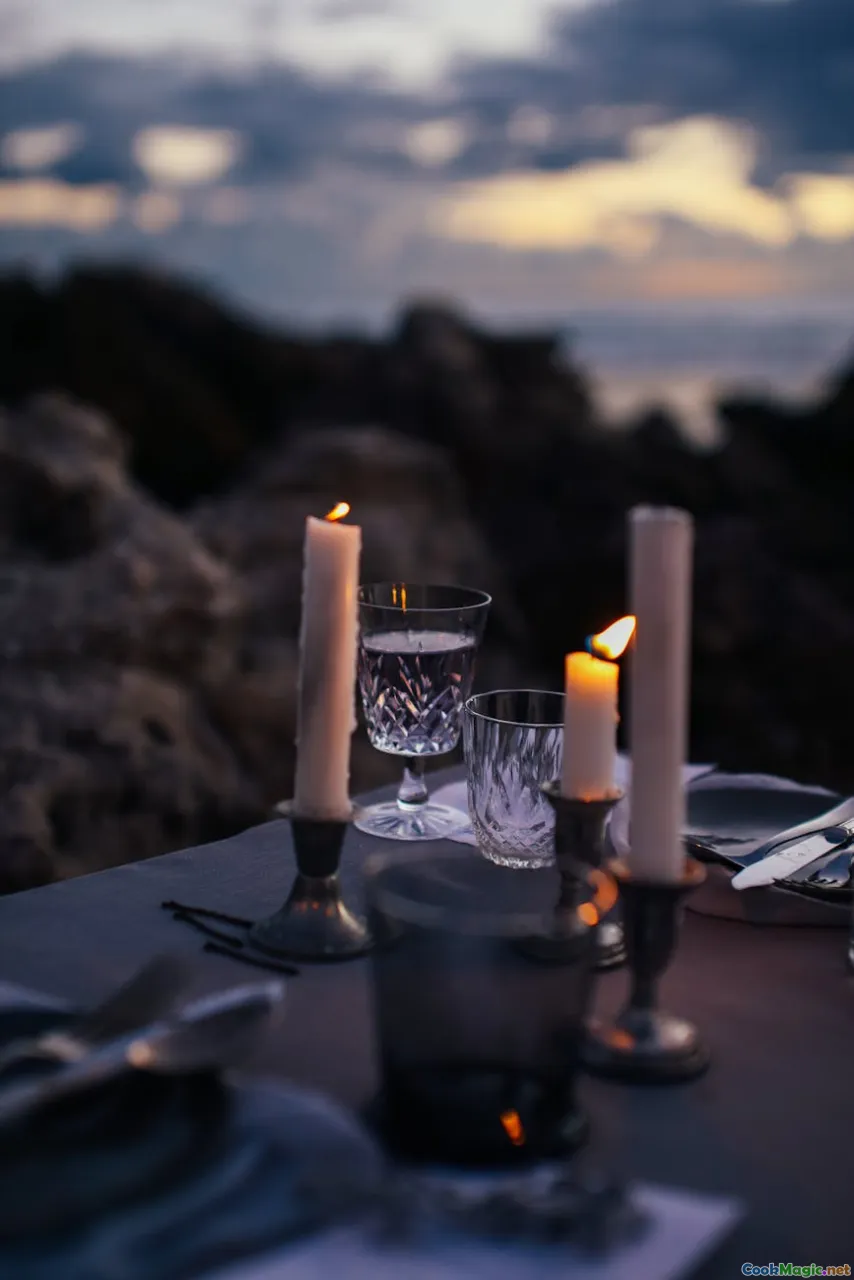
At dusk in Perast, the water is a mirror, the islets set in it like reliquaries. I remember a table where a basket of bread still smoked from the oven. A plate of cheeses sweated gently under the soft heat; pršut draped itself like silk across a wooden board. A bowl of olives gave off the green scent of far slopes. There were tomatoes that tasted of sun, cucumbers with crisp shells and sweet insides, and a dish of pickled peppers that sparkled with vinegar and laughter.
A meal is always more than what sits on the plate. In Montenegro, it is the stone a house was built from, the wind that polished a ham, the hand that pressed a cheese, the sun that sweetened a quince, the water that cooled a mill. It is markets that wake while the sky is still blue-black, and orchards that glitter with frost, and a fisherman who feels for mussels in cold water in the slant of morning. It is a grandmother beating kačamak in a pot, and a child stealing a priganica, and a winemaker whose palms are stained red.
I think of the woman who sold me raštan in Podgorica and told me to cook it slow, to be patient with bitterness. After an hour, she said, everything gives. This is not only a cooking instruction. It is what the land teaches: to be patient, to wait until the sweetness arrives through honest labor, to recognize when a thing is done—by smell, by feel, by faith. And then to take it to the table, where it belongs, and share it.
In the end, from farm to table in Montenegro is a straight line drawn through a small country with a big heart. It tastes like thyme under a shepherd’s boot, like stone warmed by sun, like olives whispering to laurel, like smoke that learned manners on the mountain. It tastes, most of all, like home—even if it isn’t yours yet. That can be arranged. Pull up a chair. There’s bread on the board, oil in the dish, and someone’s pouring Vranac. Listen to the bura—outside in the dark, it’s already seasoning tomorrow’s ham.









